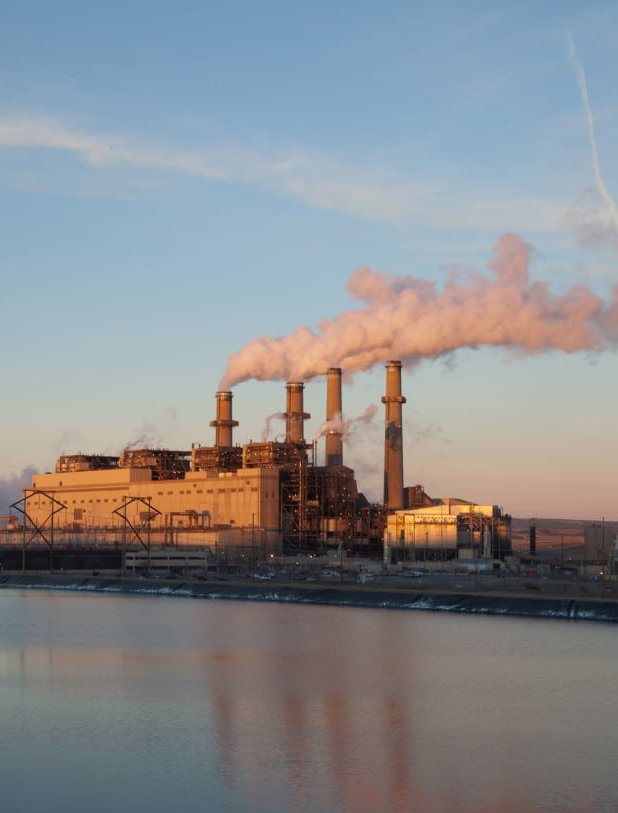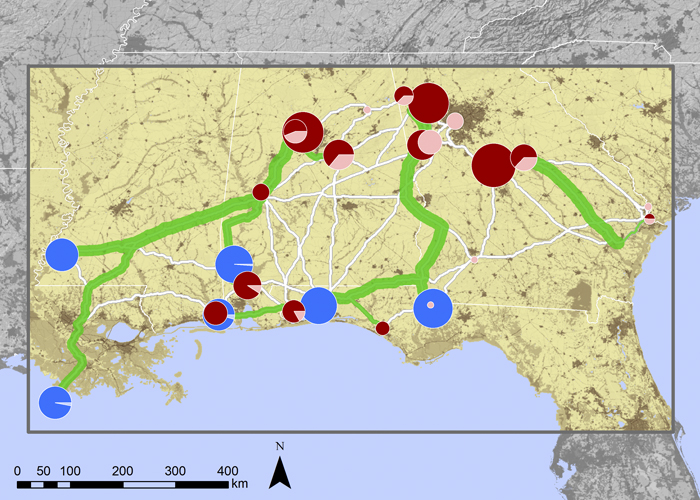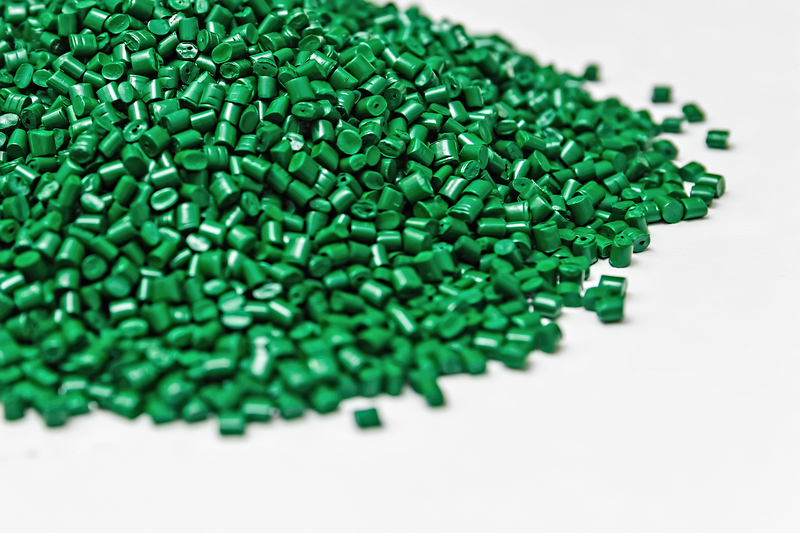Carbon Capture, Use, and Storage
“Climate change is an urgent crisis that demands an all-of-the-above approach. Investing in carbon capture will advance technological solutions, bring costs down, and cut emissions in order to prevent the worst effects of climate change.”
– Michael Bennet, U.S. Senator for Colorado
Getting to carbon neutrality requires a suite of options that go beyond renewables for power generation. Research shows that carbon capture, utilization, and storage (CCUS) must play a role in meeting clean energy targets. The U.S. Department of Energy has invested heavily in CCUS technologies, and while gaps still exist, deployment is scaling up.
In the Intermountain West, CCUS solutions promise opportunities to reduce emissions while building a robust new green economy in the region. I-WEST is exploring various CO2 capture technologies, transportation infrastructure, storage potential, and utilization scenarios.
What is CCUS?
Carbon capture, utilization, and storage (CCUS) encompasses several technologies that capture CO2 emissions from large point sources or directly from the air, as well as processes to either reuse or store the CO2 permanently. The potential impact of CCUS in a carbon-neutral energy system is significant. Approximately 66% of electricity generated in the U.S. comes from burning fossil fuels (coal and natural gas), and power plants account for roughly 35% of total CO2 emissions.

Capture
Point-source Capture
Point-source carbon capture aims to stop CO2 emissions at the source—a power plant or industrial facility—by filtering out CO2 and other harmful gases before they reach the atmosphere. A key attraction of carbon capture technology is that it can be retrofitted to plants already in place. With approximately 80 significant (greater than 1.5 million tons of CO2 per year) point source emission sites throughout the region, the Intermountain West is ripe for a large-scale conversion. While there are costs associated with modifying existing infrastructure, the U.S. government now provides tax credits for each metric ton of carbon captured, providing economic incentive for companies to decarbonize assets that would otherwise emit CO2.
In its analysis of scenarios for limiting warming to 2° Celsius, the International Energy Agency (IEA) found that carbon capture must contribute 20% of necessary emissions reductions annually by 2050, with nearly half those reductions from industrial processes with no other cost-effective way to decarbonize. To meet the more aggressive target of less than 1.5° Celsius, CCUS is even more important. The I-WEST team is engaging with companies that have current or emerging projects related to point-source capture. Technology readiness, infrastructure needs, enabling policy, and economic impacts are all being considered as the team evaluates what role point-source capture will have in a regional technology roadmap.
Direct Air Capture
Global and regional climate goals can’t be reached without removing existing carbon from the air. Direct air capture (DAC) of CO2 can be achieved using various technology approaches. Liquid solvent DAC systems pass air through chemical solutions to remove CO2, returning the rest of the air to the atmosphere. Solid sorbent DAC systems use solid sorbent filters that chemically bind with CO2 so it can be captured. Other technology options (such as membranes) are also under development.
Both DAC systems have considerable energy demands, which translate to high costs. The U.S. Department of Energy’s Carbon Negative Earthshot supports R&D efforts to design more efficient, economically viable DAC technologies that can be deployed at scale and in time to address the climate crisis. The I-WEST team is investigating how industries in the Intermountain West can integrate DAC and how the technology might evolve in the region.


Storage
Once CO2 has been captured from a point source or from the air, it must be stored either permanently or until there is a use for it. Geologic storage is the process of pressurizing CO2 into liquid form and injecting it into porous rock formations underground—these are often called geologic “sinks.” The U.S. Department of Energy’s CarbonSAFE initiative is improving the process to locate and prepare geologic sinks to store CO2 from industrial sources—a critical step toward reaching carbon neutrality. The Intermountain West has numerous potential geologic storage sites, as well an existing pipeline network that can be used to transport captured CO2 from source to sink. I-WEST is assessing how to extend this transportation network and maximize CO2 storage opportunities throughout the region.
Utilization
Captured CO2 doesn’t always get stored in the ground; in fact, it has numerous industrial purposes that can help build a carbon-based economy. Examples of this include using captured CO2 to produce synthetic fuels, cleaner concrete, and bioplastics. Biological processes also can be enhanced with captured CO2, such as algae production and crop cultivation. The U.S. Department of Energy is making cross-program investments to leverage captured carbon dioxide to foster economic potential in other energy areas. One such example is the Carbon Uptake Pathway that’s working to connect captured point source CO2 directly to algae production facilities. While CO2 use doesn’t supplant the need for storage, it does provide another pathway to integrate CO2 into a new green economy for the Intermountain West.



